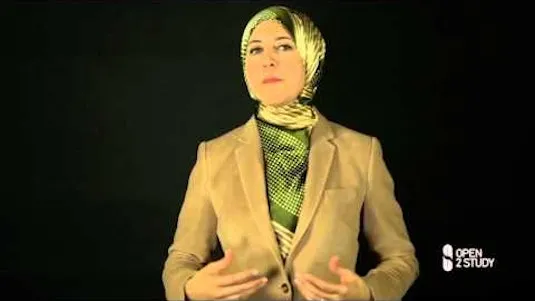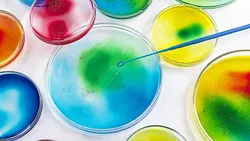
Microbiology Lectures 
This course covers the scope and impact of microbiology on human use, including infectious diseases caused by microorganisms, historical foundations, and the naming, classifying, and evolution of microorganisms. It also explores the bonds and molecules of microorganisms, as well as culturing, staining, and microscopy techniques. ▼
ADVERTISEMENT
Course Feature
![]() Cost:
Cost:
Free
![]() Provider:
Provider:
Youtube
![]() Certificate:
Certificate:
Paid Certification
![]() Language:
Language:
English
![]() Start Date:
Start Date:
On-Demand
Course Overview
❗The content presented here is sourced directly from Youtube platform. For comprehensive course details, including enrollment information, simply click on the 'Go to class' link on our website.
Updated in [February 21st, 2023]
What does this course tell?
(Please note that the following overview content is from the original platform)
CH01a Scope Impact Human Use.
CH01b Infectious Diseases Microorganisms.
CH01c Historical Foundations.
CH01d Naming Classifying Evolution.
CH02a Bonds Molecules 1.
CH02b Bonds Molecules 2.
CH02c Macromolecules.
CH03a Culturing.
CH03b Microscope.
CH03c Preparations.
CH04a Form Function.
CH04b External.
CH04c Envelope.
CH04d Internal.
CH04e Prokaryote Shapes Classification Archea.
Ch05a History External.
CH05b Internal.
CH05c Fungi.
CH05d Protists.
CH06a Search Position.
CH06b General Structures.
CH06c Modes of multiplication.
CH06d Techniques Other.
CH07a Nutrition Chemical Sources.
CH07b Microbial Nutrition Transport.
CH07c Environmental Factors.
CH07d Growth Reproduction.
CH09a Intro Genetics Genes.
CH09b DNA Replication.
CH09c Transcription.
CH09d Translation.
CH09e Eukaryotic T T.
CH09f Gene Regulation.
CH09g Mutations.
CH09h DNA Recombination.
CH11a Controlling Microorganisms.
CH11b Methods Physical Control.
CH11c Methods Physical Control.
CH11d Chemical Control.
CH12a Principles Interactions.
Ch12b Survey Major antimicrobials.
CH12c Survey major Antimicrobials.
CH12d Interactions Selecting Antimicrobials.
Ch13a The Human Host.
CH13b Progress of Infection.
CH13c Progress of Infection 2.
CH13d Progress of Infection 3.
CH13e Epidemiology.
CH14a Defense Mechanisms.
CH14b Systems Involved.
CH14c Second Line.
CH14d Second Line.
CH15a Specific Immunity.
CH15b Stage I.
CH15c Step II.
CH15d Step III.
CH15e Step III.
CH15f Vaccination.
Ch16a Type I reactions.
Ch16b Type I reactions.
CH16c Type II hypersensitivity.
CH16d Type III IV hypersensitivity.
CH16e Autoimmune Immunodeficiency.
CH17a Preparation.
CH17b Immunologic.
We consider the value of this course from multiple aspects, and finally summarize it for you from three aspects: personal skills, career development, and further study:
(Kindly be aware that our content is optimized by AI tools while also undergoing moderation carefully from our editorial staff.)
What skills and knowledge will you acquire during this course?
This course will provide students with a comprehensive understanding of microbiology. Students will gain knowledge of the scope and impact of human use of microorganisms, the history and foundations of microbiology, the naming and classifying of microorganisms, and the evolution of microorganisms. Additionally, students will acquire skills in culturing, microscopy, and preparation of microorganisms. They will also learn about the form and function of external and internal structures of prokaryotes, the history and structure of fungi and protists, and the search and positioning of general structures. Furthermore, students will gain knowledge of the modes of multiplication, techniques, nutrition, chemical sources, microbial nutrition and transport, environmental factors, growth and reproduction, genetics and genes, DNA replication, transcription, translation, eukaryotic transcription and translation, gene regulation, mutations, and DNA recombination. Additionally, students will learn about controlling microorganisms, methods of physical and chemical control, principles of interactions, survey of major antimicrobials, interactions and selecting antimicrobials, the human host, progress of infection, epidemiology, defense mechanisms, systems involved, second line, specific immunity, stages, steps, and vaccination, type I, II, III, and IV hypersensitivity, and autoimmune immunodeficiency. Finally, students will gain skills in preparation and immunologic techniques.
How does this course contribute to professional growth?
This course provides a comprehensive overview of the field of microbiology, covering topics such as infectious diseases, naming and classifying microorganisms, culturing, microscopy, form and function, nutrition and chemical sources, genetics and gene regulation, controlling microorganisms, human host defense mechanisms, and immunology. By taking this course, professionals can gain a better understanding of the field of microbiology and its impact on human use, as well as the principles of interactions between microorganisms and antimicrobials. This knowledge can be used to inform decisions in their professional field, such as the selection of antimicrobials, the development of vaccines, and the prevention of infectious diseases. As such, this course can contribute to professional growth by providing a comprehensive overview of the field of microbiology and its implications.
Is this course suitable for preparing further education?
This course appears to cover a wide range of topics related to microbiology, and could be suitable for preparing for further education. The topics covered include scope and impact of human use, infectious diseases, historical foundations, naming and classifying, evolution, bonds and molecules, macromolecules, culturing, microscope preparations, form and function, external and internal envelopes, prokaryote shapes and classification, archea, history, fungi, protists, search and position, general structures, modes of multiplication, techniques, nutrition and chemical sources, microbial nutrition and transport, environmental factors, growth and reproduction, genetics and genes, DNA replication, transcription, translation, eukaryotic transcription and translation, gene regulation, mutations, DNA recombination, controlling microorganisms, methods of physical and chemical control, principles of interactions, survey of major antimicrobials, interactions and selecting antimicrobials, the human host, progress of infection, epidemiology, defense mechanisms, systems involved, second line, specific immunity, stages, steps, vaccination, type I, II, III and IV hypersensitivity, and autoimmune immunodeficiency. This course could be suitable for preparing for further education, as it covers a wide range of topics related to microbiology.
Course Provider

Provider Youtube's Stats at AZClass
Over 100+ Best Educational YouTube Channels in 2023.
Best educational YouTube channels for college students, including Crash Course, Khan Academy, etc.
AZ Class hope that this free Youtube course can help your Microbiology skills no matter in career or in further education. Even if you are only slightly interested, you can take Microbiology Lectures course with confidence!
Discussion and Reviews
0.0 (Based on 0 reviews)
Explore Similar Online Courses

Designing with ServiceNow Flow Designer

Advanced C++

Python for Informatics: Exploring Information

Social Network Analysis

Introduction to Systematic Review and Meta-Analysis

The Analytics Edge

DCO042 - Python For Informatics

Causal Diagrams: Draw Your Assumptions Before Your Conclusions

Whole genome sequencing of bacterial genomes - tools and applications

Microbiology and Forensic Science

Microbiology Textbook


Start your review of Microbiology Lectures